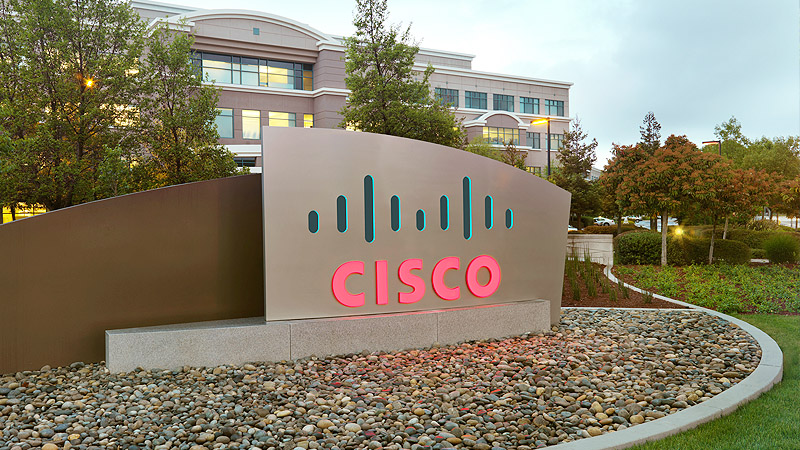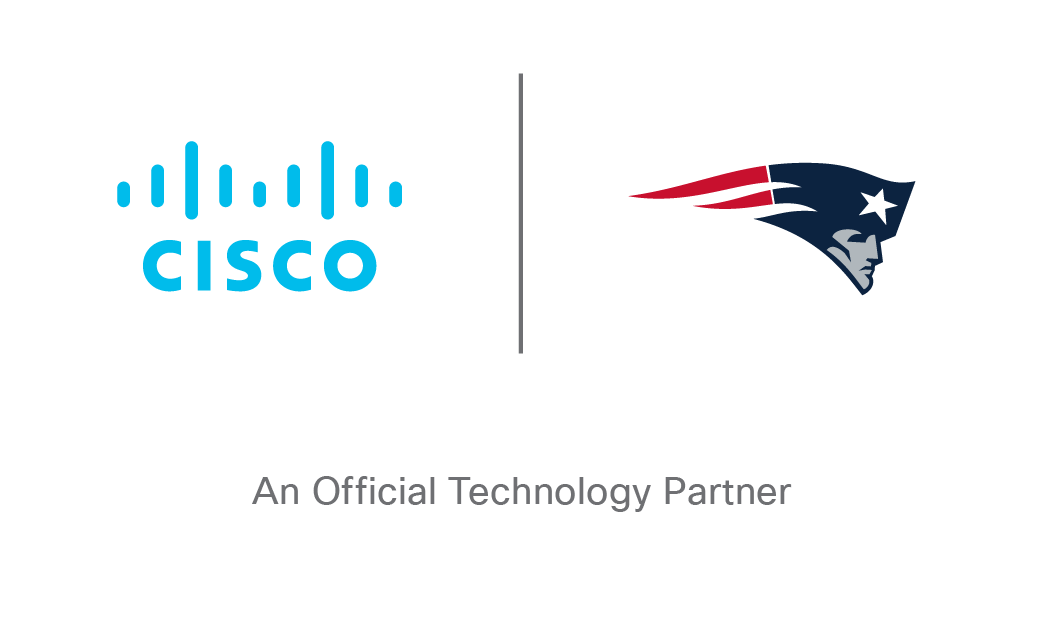SAN JOSE, Calif. – Oct. 15, 2013 – In the third annual Cisco® Global Cloud Index (2012 – 2017) issued today, Cisco forecasts that global cloud traffic, the fastest growing component of data center traffic, is expected to grow 4.5-fold – a 35 percent combined annual growth rate (CAGR) – from 1.2 zettabytes of annual traffic in 2012 to 5.3 zettabytes by 2017. Overall global data center traffic will grow threefold and reach a total of 7.7 zettabytes annually by 2017.
A zettabyte is one billion terabytes. For context, 7.7 zettabytes is equivalent to:
- 107 trillion hours of streaming music –about 1.5 years of continuous music streaming for the world's population in 2017.
- 19 trillion hours of business web conferencing –about 14 hours of daily web conferencing for the world's workforce in 2017.
- 8 trillion hours of online high-definition (HD) video streaming –about 2.5 hours of daily streamed HD video for the world's population in 2017.
Approximately 17 percent of data center traffic will be fueled by end users accessing clouds for web surfing, video streaming, collaboration and connected devices, all of which contribute to the Internet of Everything, which is the networked connection of people, data, process and things.
Other data center traffic is not caused directly by end users, but by data centers and cloud-computing workloads used in activities that are virtually invisible to individuals. For the period 2012–2017, Cisco forecasts that 7 percent of data center traffic will be generated between data centers, primarily driven by data replication and software/system updates. An additional 76 percent of data center traffic will stay within the data center and will be largely generated by storage, production and development data in a virtualized environment.
"People all over the world continue to demand the ability to access personal, business and entertainment content anywhere on any device, and each transaction in a virtualized, cloud environment can cause cascading effects on the network," said Doug Merritt, Senior Vice President, Product and Solutions Marketing, Cisco. "Because of this continuing trend, we are seeing huge increases in the amount of cloud traffic within, between and beyond data centers over the next four years."
From a regional perspective, the Cisco Global Cloud Index predicts that through 2017, the Middle East and Africa will have the highest cloud traffic growth rate (57 percent CAGR), followed by Asia Pacific (43 percent CAGR) and Central and Eastern Europe (36 percent CAGR).
Overview:
- The Cisco Global Cloud Index (2012–2017) was developed to estimate global for data center and cloud-based Internet Protocol (IP) traffic growth and trends. The Cisco Global Cloud Index serves as a complementary resource to existing network traffic studies, providing new insights and visibility into emerging trends affecting data centers and cloud architectures. The forecast becomes increasingly important as the network and data center become more intrinsically linked in offering cloud services.
- The Cisco Global Cloud Index includes a "workload transition" forecast, which shows the workload shift from moving from traditional data centers to more virtualized cloud servers.
- The forecast also includes a supplement on Cloud Readiness Regional Details, which examines the fixed and mobile network abilities of each global region (from nearly 150 countries) to support business and consumer cloud-computing applications and services.
- The Cisco Global Cloud Index is generated by modeling and analysis of various primary and secondary sources, including 40 terabytes of monthly traffic sampled from a variety of global data centers over the past year, results from more than 90 million network tests, and third-party market research reports.
Key Highlights/Findings:
- Global data center traffic growth will increase threefold by 2017 - Cisco forecasts that global data center traffic will triple from 2.6 zettabytes in 2012 to 7.7 zettabytes annually in 2017, representing a 25 percent CAGR.
- Global cloud traffic will grow faster than overall global data center traffic - The transition to cloud services is driving global cloud traffic at a growth rate greater than global data center traffic. Global data center traffic will grow threefold (a 25 percent CAGR) from 2012 to 2017, while global cloud traffic will grow 4.5-fold (a 35 percent CAGR) over the same period.
- Global cloud traffic will account for more than two-thirds of total global data center traffic - Globally, cloud traffic will grow from 46 percent of total data center traffic (98 exabytes per month or 1.2 zettabytes annually) of total data center traffic in 2012 to 69 percent of total data center traffic (443 exabytes per month or 5.3 zettabytes annually) of total data center traffic by 2017.
- Cloud traffic growth by region: The Middle East and Africa will have the highest cloud traffic growth rate from 2012 to 2017 - The Cisco Global Cloud Index now includes regional forecast data for cloud traffic growth.
o In 2012, North America generated the most cloud traffic (469 exabytes annually), followed by Asia Pacific (319 exabytes annually) and Western Europe (225 exabytes annually).
o By 2017, North America will generate the most cloud traffic (1.886 zettabytes annually), followed by Asia Pacific (1.876 zettabytes annually) and Western Europe (770 exabytes annually).
- Workload transitions: From 2012 to 2017, data center workloads will grow 2.3-fold; cloud workloads will grow 3.7-fold - In 2012, 39 percent of workloads were processed in the cloud, with 61 percent being handled in a traditional data center.
- 2014 will be the first year when the majority of workloads shift to the cloud; 51 percent of all workloads will be processed in the cloud versus 49 percent in the traditional IT space.
- By 2017, nearly two-thirds or 63 percent of workloads will be processed by cloud data centers; 37 percent will be processed by traditional data centers.
- The ratio of workloads to nonvirtualized cloud servers will grow from 6.5 in 2012 to 16.7 by 2017. Comparatively, the ratio of workloads to nonvirtualized traditional data center servers will grow from 1.7 in 2012 to 2.3 by 2017.
- Workload growth by region: By 2017, North America will have processed the most cloud workloads, followed by Asia Pacific - The Cisco Global Cloud Index now includes regional forecast data for workload growth.
- In 2012, North America had the most cloud workloads (15.2 million or 47 percent of global cloud workloads), followed by Asia Pacific, which had 6.8 million or 21 percent of global workloads in 2012.
- By 2017, North America will process the most cloud workloads (48.2 million or 41 percent of global cloud workloads), followed by Asia Pacific, which will have 36.5 million or 31 percent of global workloads by 2017.
- From 2012 to 2017, the Middle East and Africa region is expected to have the highest cloud workload growth rate (45 percent CAGR), followed by Asia Pacific (40 percent CAGR) and Central and Eastern Europe (31 percent CAGR).
- Globally, except in the Middle East and Africa and Asia Pacific, traditional data center workloads (rather than cloud workloads) will grow at a low-single-digit CAGR from 2012 to 2017.
Cloud Readiness:
To assess cloud readiness, various fixed and mobile network attributes were analyzed. Average and median upload and download speeds and latencies were analyzed (median values were added this year to understand the variability of end-user cloud readiness within each country). Network performance characteristics are provided across each geographic region: Asia Pacific, Central and Eastern Europe, Latin America, Middle East and Africa, North America and Western Europe. For this study, the following sample application categories were applied:
- Basic Cloud Apps / Network Requirements
Download Speed: Up to 750 kbps; Upload Speed: Up to 250 kbps; Latency: Above 160 ms
Sample consumer basic services: text communications (email, instant messaging), web browsing, personal content locker (non-multimedia), e-banking, single player gaming, social networking (text only), basic video/ music streaming
Sample business basic services: text communications (email, instant messaging), VoIP, web conferencing
- Intermediate Cloud Apps / Network Requirements
Download Speed: 751–2,500 kbps; Upload Speed: 251–1,000 kbps; Latency: 159–100 ms
Sample consumer intermediate services: smart home, personal content locker (multimedia), online shopping, multi-player gaming, social networking (multi-media/ interactive), HD video/ music streaming, IM video chat
Sample business intermediate services: ERP/CRM, IP audio conferencing, video conferencing
Advanced Cloud Apps / Network Requirements
Download Speed: >2,500 kbps; Upload Speed: Higher than 1,000 kbps; Latency: <100 ms
Sample consumer advanced services: connected education, connected medicine, HD video chat, Super HD video streaming, 3D video streaming
Sample business advanced services: virtual office, HD audio conferencing, HD video conferencing,
All regions' current average fixed network performance characteristics can support an intermediate level of cloud services today.
- The fixed networks of Asia Pacific, North America, Central Eastern Europe, Western Europe and Latin America can support advanced cloud applications.
- All regions' current average mobile network performance characteristics can support some level of cloud services today.
- The mobile networks of Asia Pacific, Middle East and Africa, and Latin America can support basic cloud applications.
- The average performance of the mobile networks of Central and Eastern Europe, North America and Western Europe can support intermediate cloud applications.
- Most regions have some outlier countries with fixed and mobile network performance results that are higher than their region's average cloud readiness metrics. For example, the mobile networks of individual countries such as Hong Kong and Singapore in Asia Pacific, and United Arab Emirates in the Middle East and Africa can support advanced cloud applications
*Concurrent use of multiple applications requires even higher network performance capabilities than the requirements for individual application support shown above. Concurrent application requirements are covered in the Cisco Global Cloud Index Forecast and Methodology, 2012 – 2017...
Embedded Videos:
- View our video: "Cisco Global Cloud Index Overview (2012 – 2017)," featuring Cisco's Thomas Barnett, Director, Service Provider Thought Leadership.
Supporting Resources:
- Visit the Cisco Global Cloud Index website
- Explore the Cisco Global Cloud Index Highlights Tool
- Read the Cisco Global Cloud Index Forecast and Methodology, 2012 – 2017 White Paper
- Explore the Cisco® Cloud Readiness Tool
- Review the Cisco Global Cloud Index Supplement: Cloud Readiness Regional Details
- Get your questions answered through the Cisco Global Cloud Index Q&A
- Review and download the Cisco® Data Meter application for Android/iOS smartphones and tablets
- For more information about Cisco's service provider news and activities visit the SP360: Service Provider Blog
- Follow us on Twitter @CiscoSP360
- Connect with us on Facebook - Cisco SP360
- Subscribe to Cisco's SP360: Service Provider RSS Feed
Editor's Note:
- Cisco welcomes and encourages analysts, bloggers, media, regulators, service providers and other interested parties to use and reference Cisco's research with proper attribution: "Source: Cisco Global Cloud Index."
Tags/Keywords:
- Cisco, Global Cloud Index, Data Center Traffic, Cloud Traffic, Cloud, Cloud Computing, Data Center, Virtualization, Service Provider, Telecom, Enterprise, Consumer, Zettabytes
Cisco "The Network" RSS Feeds:
About Cisco:
Cisco (NASDAQ: CSCO) is the worldwide leader in IT that helps companies seize the opportunities of tomorrow by proving that amazing things can happen when you connect the previously unconnected. For ongoing news, please go to http://thenetwork.cisco.com.
# # #
Cisco and the Cisco logo are trademarks or registered trademarks of Cisco and/or its affiliates in the U.S. and other countries. A listing of Cisco's trademarks can be found at www.cisco.com/go/trademarks. Third-party trademarks mentioned are the property of their respective owners. The use of the word partner does not imply a partnership relationship between Cisco and any other company.






